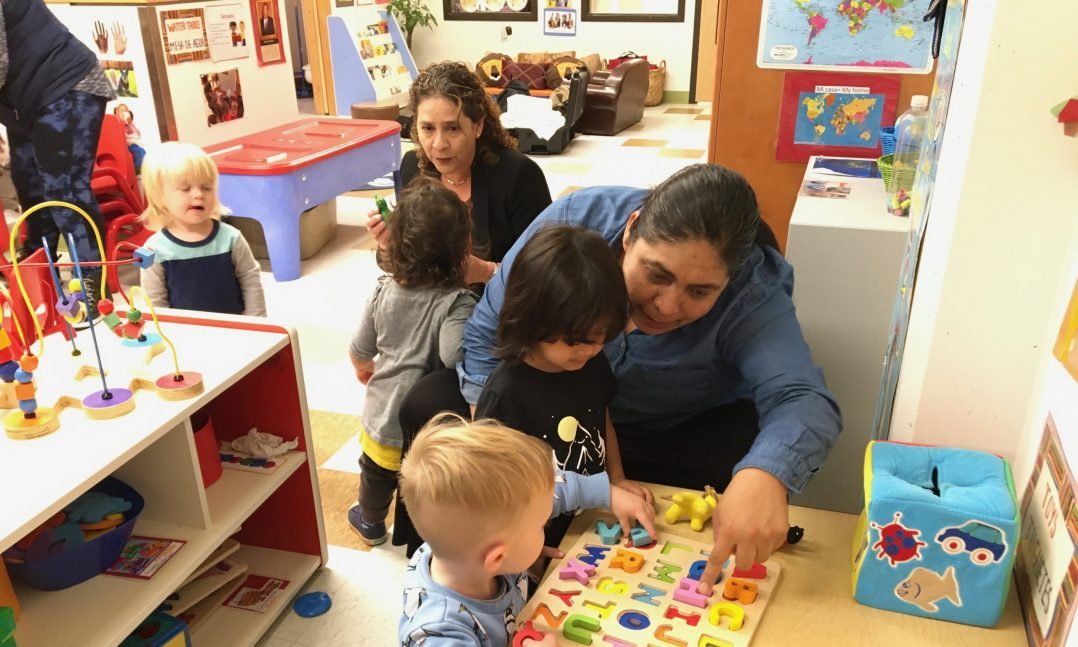UnidosUS’s New Report ‘Latina Teachers and the BA Challenge’ Highlights Concerns for Attracting and Retaining Diverse, High-Quality Pre-K Educators
Text by Rae Jung, video by Elnatan Melaku Mulugeta and Julienne Gage
In 2018, UnidosUS met with program administrators and teachers working in Early Childhood Education (ECE) to answer the question: what does it take for Latina teachers in this field to obtain the BA degrees increasingly required by various programs and federal and state policies? As the new report Latina Teachers and the “BA Challenge:” Impacts and Conditions of Increasing Degree Requirements in Early Childhood Education reveals, for many teachers, it takes money, debt, stress, and a never- ending cycle of work, schoolwork, and family responsibilities that culminate in a $1-2 an hour raise – at which point, teachers still do not make as much money as the bus drivers who bring the students to school.
Latinas make up 19% of all ECE teachers nationally. Of the 94 teachers included in the report, over a third (34%) of participants had 15 years or more of ECE experience. Given this data, UnidosUS believes it is critical to make policies that help to retain diverse, experienced teachers, and give them compensation that is commensurate with this experience.
The report notes that more financial resources would certainly mitigate some of these challenges, especially for Latinas who make up 19% of the United States’ predominantly female ECE workforce of early childhood educators. According to the report’s focus groups, most Latina teachers already working in ECE persist and enter a BA program while continuing to teach. Only small numbers of teachers were reported to take demotions or leave their positions.
Nationally, the ECE workforce is almost entirely female. In 2018, the U.S. Bureau of Labor Statistics showed that the median pay for childcare workers and preschool teachers ranged from $23,240 to $29,780 annually ($11.17 to $14.34 per hour). These figures straddle the poverty level for a family of four.
For teachers who decide to pursue a BA degree, nearly half of all states provide Teacher Education And Compensation Helps (T.E.A.C.H.)scholarships. The scholarships offered through this education advocacy organization cover up to 90% of tuition as well as textbook and transportation costs, but such support is by no means universal.
“A scholarship program at the federal level could be a game changer for teachers who are currently paying for a degree out of pocket, says the report’s author Bob Stechuk, Director of Early Childhood Education programs at UnidosUS, “but that’s not enough – we need system alignment and transparent, seamless articulation agreements to ensure that teachers who have earned Child Development Associate credentials (CDA) and associate’s degrees do not lose credits as they work towards their BA.”
There is consensus in the field that high quality ECE leads to better long-term outcomes for students, and that teachers with credentials play in important role in this equation. As such, requiring ECE teachers to obtain a BA has become the state and federal policy proxy for improving ECE quality.
What isn’t agreed upon is how the wider ECE field defines and measures quality.
“Requiring a BA for the sake of a BA doesn’t have the same impact as requiring a BA that explicitly prepares teachers to address the needs of the increasingly diverse and multi-lingual learners in their classrooms; a significant and growing portion of whom are Latinx,” notes Stechuk.
One in four current public-school students are Latino, and it’s projected that by 2050 it could one in two. Plus, more than 4 million children in preschool are dual language learners. But many degree programs overlook the research that shows the significant impact that culture and home languages have on children as they learn. Although the participants of UnidosUS’ focus groups are working through college degree programs, most reported that their coursework does not address children who are dual language learners.
“Definitions of quality ECE should include the benefits of having teachers who understand dual language development and who are culturally responsive, especially for our growing Latinx student population,” says Stechuk.


